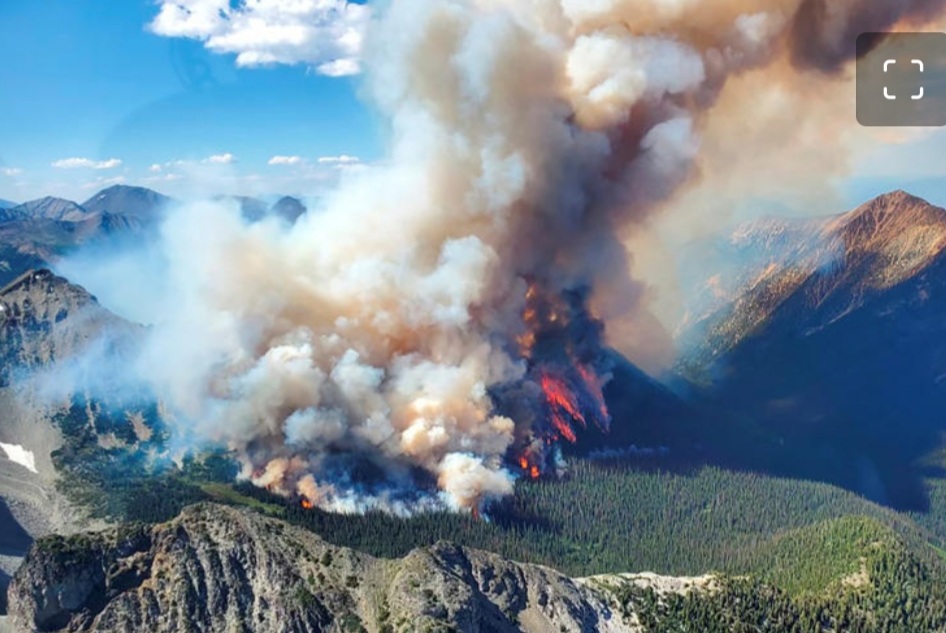Canada sees its farthest-north 100-degree temperature as wildfires rage
Ian Livingston / hingtonpost.com
Blistering temperatures reached unheard-of northerly latitudes in Canada over the weekend amid dangerously hot and dry conditions, lightning storms and new blazes that intensified the country’s historically severe fire season.
The temperature soared as high as 100 degrees in the Northwest Territories on Saturday, the hottest temperature ever measured north of 65 degrees latitude in the Western Hemisphere, according to Christopher Burt, an extreme-weather historian.
The scorching temperatures over western Canada exacerbated the country’s unprecedented wildfire crisis. A record 22.7 million acres (9.2 million hectares) have burned so far, according to the Canadian Interagency Forest Fire Centre, blowing past the previous high mark of 17.5 million acres (7.1 million hectares) in 1995. There are months of the wildfire season to go.
Record heat near the Arctic Circle
In the desolate and oil-rich region of the Northwest Territories, nestled in the wooded Taiga Plains about 3o0 miles from the Arctic Ocean, the small town of Norman Wells hit 100 degrees on Saturday.
It was “easily the farthest north in Canada with a reading of 37C (99F) or higher in the Canadian climate record,” tweeted climatologist Brian Brettschneider, before the mercury ultimately ticked up to 100.
In an email, Burt said the Norman Wells reading was just 0.1 Celsius shy of the hottest temperature ever observed near or just north of the Arctic Ocean: 100.4 degrees (38.0 Celsius) in Verkhoyansk, Russia, in June 2020.
Norman Wells had some company in the Northwest Territories to the east of the Mackenzie Mountains. Fort Good Hope, about 70 miles northwest of Norman Wells, reached 99.4 degrees (37.4 Celsius). Temperatures in the mid- to high 90s were also recorded south into northern British Columbia.
By comparison, in the United States the farthest-north 100-degree mark pushed east of the Mississippi River in southern Illinois. West of the Rockies, temperatures this high have yet to reach Wyoming and Montana.
Wildfire boom in the West
As if the broiling heat weren’t enough, at 5 p.m. Saturday, Noman Wells recorded a visibility of 1.25 miles because of wildfire smoke across the region. Earlier in the afternoon, visibility was as low as 0.75 miles there with temperatures in the 90s.
New rounds of evacuations were ordered over the weekend in northern British Columbia, where hundreds of fires raged, according to the provincial government. Many new blazes were sparked because of relatively dry thunderstorms, producing lightning but little rain, during recent days.
The Canadian Broadcasting Corp. reported that most of the fires in the province are out of control.
“Thirteen of them are deemed a potential threat to people or are highly visible — including one south of Fort St. James, one southwest of Quesnel, and another north of Fort St. John,” it wrote.
British Columbia’s largest wildfire on record, the Donnie Creek Fire, is approaching 1.5 million acres (600,000 hectares) and has showed extreme behavior on several flanks after it had previously quieted-down somewhat. The fire began on May 12.
More than 2.7 million acres (1.1 million hectares) have burned so far this year in British Columbia, compared to an average annual of 1 million acres (407,000 hectares), and approaching some of the record-worst seasons with a large portion of the fire season to come.
